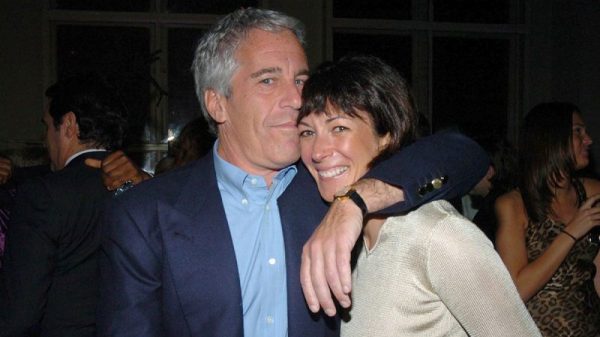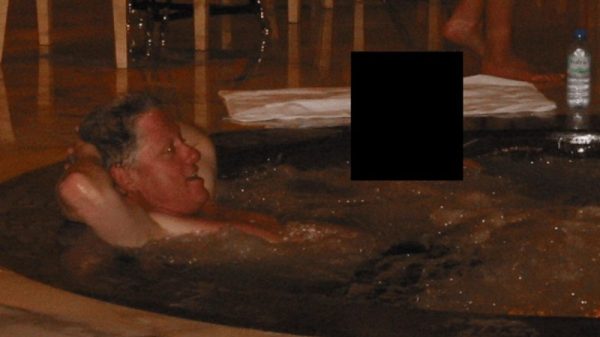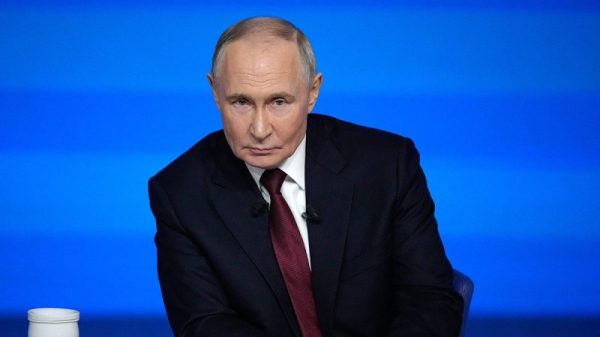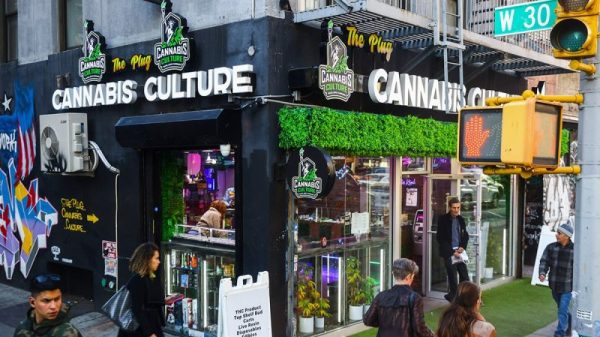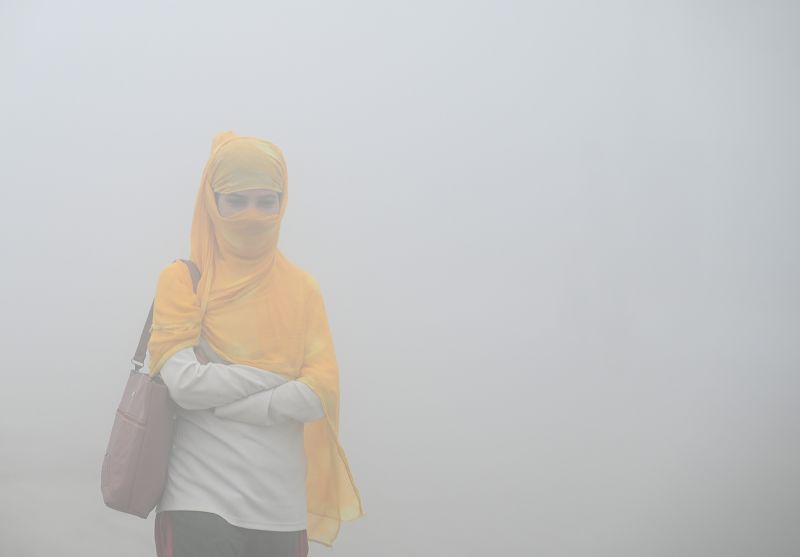Inside Delhi’s first ever clinic dedicated to pollution-related illnesses, Deepak Rajak struggles to catch his breath.
The 64-year-old’s asthma has worsened in recent days, and his daughter rushed him to the clinic, anxious about his rapidly deteriorating health.
“It’s impossible to breathe. I just came by bus, and I felt like I was suffocating,” he says.
The specialist clinic at Delhi’s Ram Manohar Lohiya (RML) hospital was set up last year to treat the growing number of patients affected by hazardous air pollution, which worsens every winter in the Indian capital.
Outside, a throat-searing blanket of toxic smog has settled over the city since late last month, turning day into night, disrupting flights, blocking buildings from view and endangering the lives of millions of people.
As of last week, nowhere else on the planet has air so hazardous to human health, according to global air quality monitors.
It’s become so bad that Delhi’s Chief Minister Atishi, who goes by one name, declared a “medical emergency” as authorities closed schools and urged people to stay home.
But that’s not an option for Rajak, who relies on his dry-cleaning job to provide for his family.
“What can I do? I have to leave the house to go to work,” he says. “If I don’t earn money, how will I eat? When I leave the house, my throat gets completely jammed. By evening it feels like I am lifeless.”
Rajak has already been hospitalized once this year as the smog aggravated his asthma.
With no relief in sight from the hazardous pollution, his daughter Kajal Rajak says she fears he will need to be readmitted – an added financial burden when they’re already struggling to pay for inhalers and expensive diagnostic tests.
Even taking her father to the clinic was dangerous, she says.
“You can’t see what’s in front of you,” Kajal says. “We were at the bus stop, and we couldn’t even see the bus number, or whether a bus is even coming – that’s how hazy it was.”
‘Like chili in my eyes’
In some parts of Delhi this week, pollution levels exceeded 1,750 on the Air Quality Index, according to IQAir, which tracks global air quality. A reading above 300 is considered hazardous to health.
On Wednesday, the reading for the tiniest and most dangerous pollutant, PM2.5, was more than 77 times higher than safe levels set by the World Health Organization.
When inhaled, PM2.5 travels deep into lung tissue where it can enter the bloodstream, and has been linked to asthma, heart and lung disease, cancer, and other respiratory illnesses, as well as cognitive impairment in children.
Anushree Fadnavis/Reuters
Sunil Ghosh/Hindustan Times/Getty Images
“It feels like chili in my eyes,” said Mohammad Ibrahim, a longtime auto driver in the city, adding that his chest hurts constantly from working outside in the pollution all day.
“When I go home in the evening and wash my hands and face, black stuff comes out of my nose. That never used to happen before,” Ibrahim said.
Like Rajak, Ibrahim can’t afford to stop working, even though his health is at risk.
“If I don’t go out to work, how will I fill my stomach? How will I pay my rent? I am a poor man,” he said.
Some vulnerable residents say it has become difficult to survive in Delhi. Retired Indian Air Force member Aditya Kumar Shukla, 64, said he tries not to venture outside on polluted days.
Shukla said he has been hospitalized three times this year and would move away from the city if he could.
“It causes stress, and it is very dangerous, but at this stage where can I go?” he said. “It angers me very much, I want to go out of Delhi but there are no facilities in India, especially for (those with asthma and lung disease).”
At the pollution clinic, Dr. Amit Jindal says he and his colleagues have seen a marked increase in patients with chest and lung problems since pollution levels skyrocketed. He confirmed the increase is directly related to the smog.
Patients are suffering from persistent coughs, chest and lung issues and stinging eyes, but those with existing health issues like Rajak and Shukla, or those who work outside, are more vulnerable, Jindal says.
Dr. Gaurav Jain, a pulmonologist at Batra hospital, says even non-smokers are developing chronic obstructive pulmonary disease (COPD) – a lung condition that restricts airflow and causes breathing problems.
“Many patients who chronically inhale the pollutants, who work near dust areas, they develop COPD,” he says. “Their lungs are unhealthy; they develop shortness of breath at quite an early age as compared to the normal population and have an increased risk of lung cancer.”
Long-term crisis
Delhi has been struggling with high levels of air pollution for more than two decades.
Air quality worsens each year as the summer heat gives way to the cooler months. Windless days mean smog from agricultural waste fires, coal-fired power plants, and traffic hovers over the city’s skies.
Air quality worsens each year as the summer heat gives way to the cooler months, and smog from agricultural waste fires, coal-fired power plants, and traffic blankets the skies.
India’s pollution authority on Sunday said several parts of Delhi had “severe+” air quality and scrambled to relieve the smog, implementing emergency measures including halting non-essential truck movement and construction work.
Officials are also sprinkling roads with water and dust suppressants, and ramping up road sweeping.
But experts say these efforts, which are rolled out every year, are merely temporary measures that don’t tackle the underlying causes of air pollution.
“In terms of actual action to reduce emissions at source, it has been very limited, and I can fairly confidently say that the intensity of the response by the government to curtail these hazardous pollution levels does not match the intensity of the emergency we face,” said environmental analyst Sunil Dahiya.
In 2019, the Indian government introduced the National Clean Air Program to improve ambient air quality in cities, and several other committees have been set up at both national and state levels to tackle air pollution.
But analysts say governments are focusing more on the emergency response rather than sustained efforts to improve air quality. While stubble burning during the winter harvest season exacerbates pollution levels, to solve the crisis, pollution needs to be tackled year-round, Dahiya said.
“We need to work on systematic and comprehensive actions which reduce pollution at source, which means that we have to start talking about how much is being emitted in terms of air pollution from the transportation sector, power sector, industries, waste and in which geography,” Dahiya said.
At the clinic, Kajal Rajak is anxious about her father’s worsening health that leaves him struggling to breathe and walk. She’s angry, but she says getting mad won’t solve the problem.
“The government needs to do something.”

















